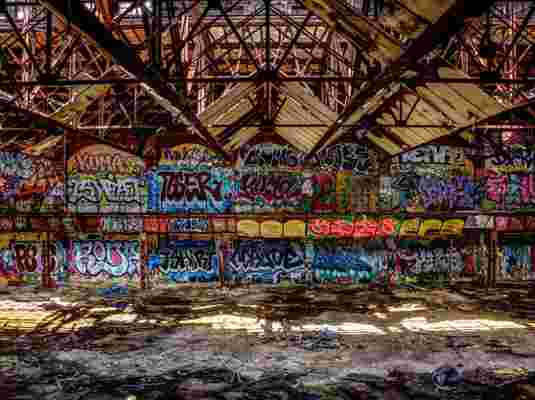Herzog & de Meuron Will Transform a Brooklyn Batcave into an Art Space
Another abandoned industrial building in Brooklyn is getting a facelift. The former Brooklyn Rapid Transit Powerhouse, set along the hyperdeveloping Gowanus Canal, will become an arts manufacturing center. Purchased in 2012 by philanthropist Joshua Rechnitz, the space will evolve into sort of a modern Warhol Factory under the eye of the Powerhouse Environmental Arts Foundation. Basel, Switzerland-based, Pritzker Prize-winning architecture firm Herzog & de Meuron has been commissioned to create the Powerhouse Workshop, a state-of-the-art space for wood, metal, ceramics, textiles, and print making, with work expected to begin this fall.
The erstwhile power plant has its roots in urban art. Built in 1904, the plant was decommissioned in the ‘50s and by the early 2000s became known as the Batcave, a graffiti-decorated space for punks, drifters, and homeless people. Squatters were kicked out by 2006, and the building has remained empty since—living on as an emblem of gentrification, urban development, and street art (its most prominent neighbor is the wind turbine-powered Whole Foods Market, housing a rooftop greenhouse farm). Still visible along the roof of the Batcave are the words "FRISK • HANDS OFF THE KIDS."

Inside of the graffiti-covered batcave, which will soon transform into an artist studio.
Herzog & de Meuron are known for their glossy residential buildings and museums all over Europe, North America, and Asia. Yet, for all of the high-end structures Herzog has come to be known for, this isn’t the firm’s first powerhouse-turned-art space. In 2000 Herzog converted London’s Bankside power plant into the Tate Modern Museum .
In Brooklyn, however, plans for the Powerhouse Workshop include renovating an existing Turbine Hall and rebuilding a separate six-story structure, the Boiler House, torn down decades ago. “By preserving, restoring, and reconstructing essential elements of the original Power Station—some still intact and some long-ago demolished—this design strengthens its relationship to the immediate urban context,” Herzog & de Meuron senior partner Ascan Mergenthaler said in a statement. And, one hopes, that means retaining much of the original graffiti. But what will that mean for Gowanus, a gentrifying neighborhood in Brooklyn? "I think the vibe of the neighborhood right now is really interesting because it's in transition," says Aniket Shahane, founder and principal of the Brooklyn-based firm Office of Architecture. "I think it'll be fantastic to have an art space designed by world-class architects a few blocks down from some really eclectic buildings and shops. My hope is that the neighborhood doesn't become homogenized. Cities are better when they're inclusive and leave some room for spontaneity and surprise. I'm rooting for them—both the neighborhood and the architects." The new building is expected to be unveiled in 2020.